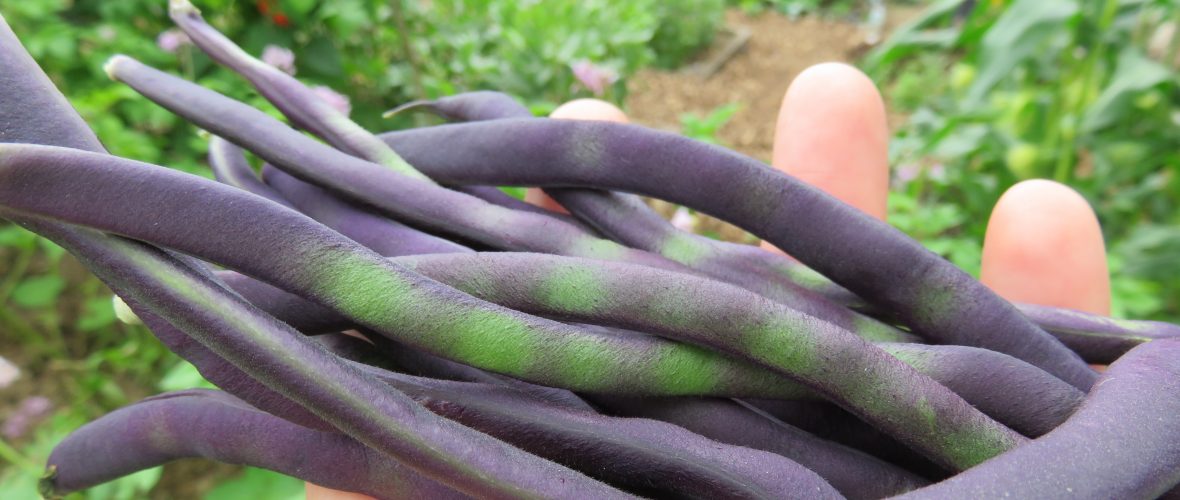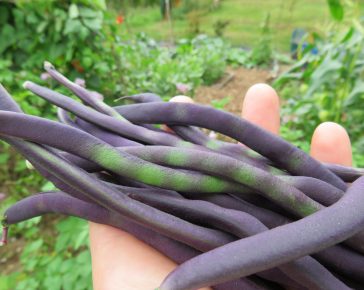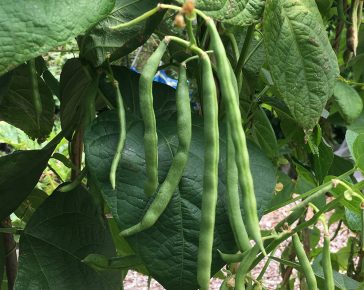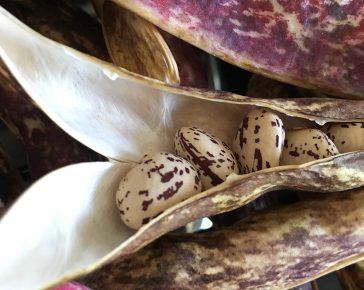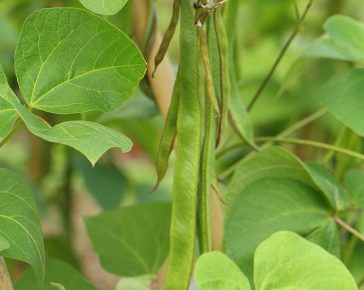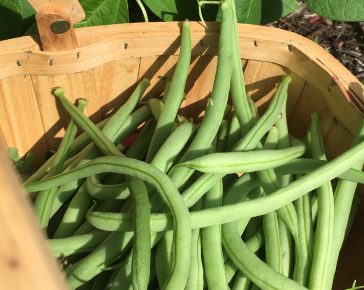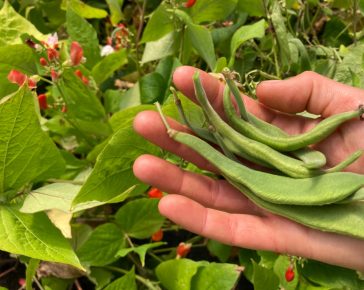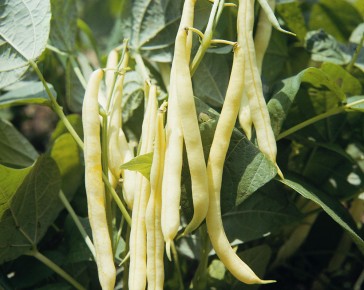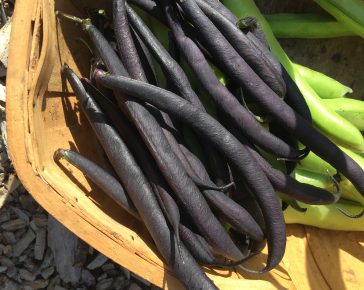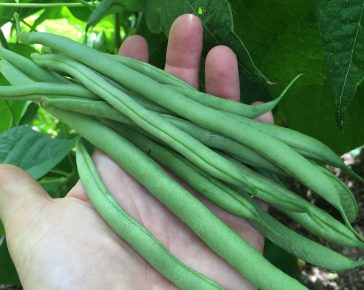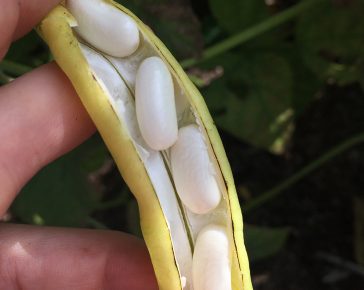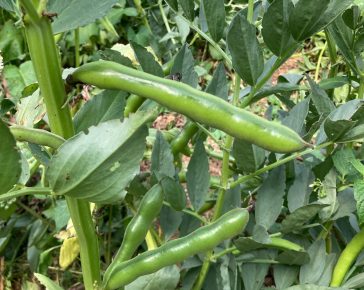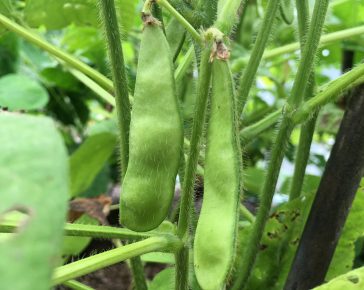We have quite a large selection of bean varieties for you to choose from in our plug plant range these days – this article takes a look at some of the different options to help you decide which would be best for your garden this year. It all depends on what you like to eat, and whether you’re growing in containers or beds…
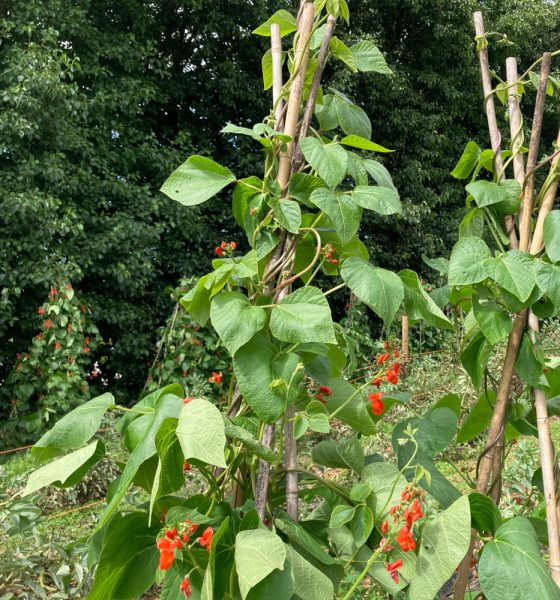
Climbing beans are great for larger gardens
By the time you’ve built a wigwam or a-frame bean support, you can find that your beans take up a fair bit of space in your garden, so they do tend to be more popular with gardeners who have a decent sized plot.
We’d usually suggest that, if you are growing them in this way, you’ll probably want a space approx 1.5m x 1m for a set of 10 climbing beans.
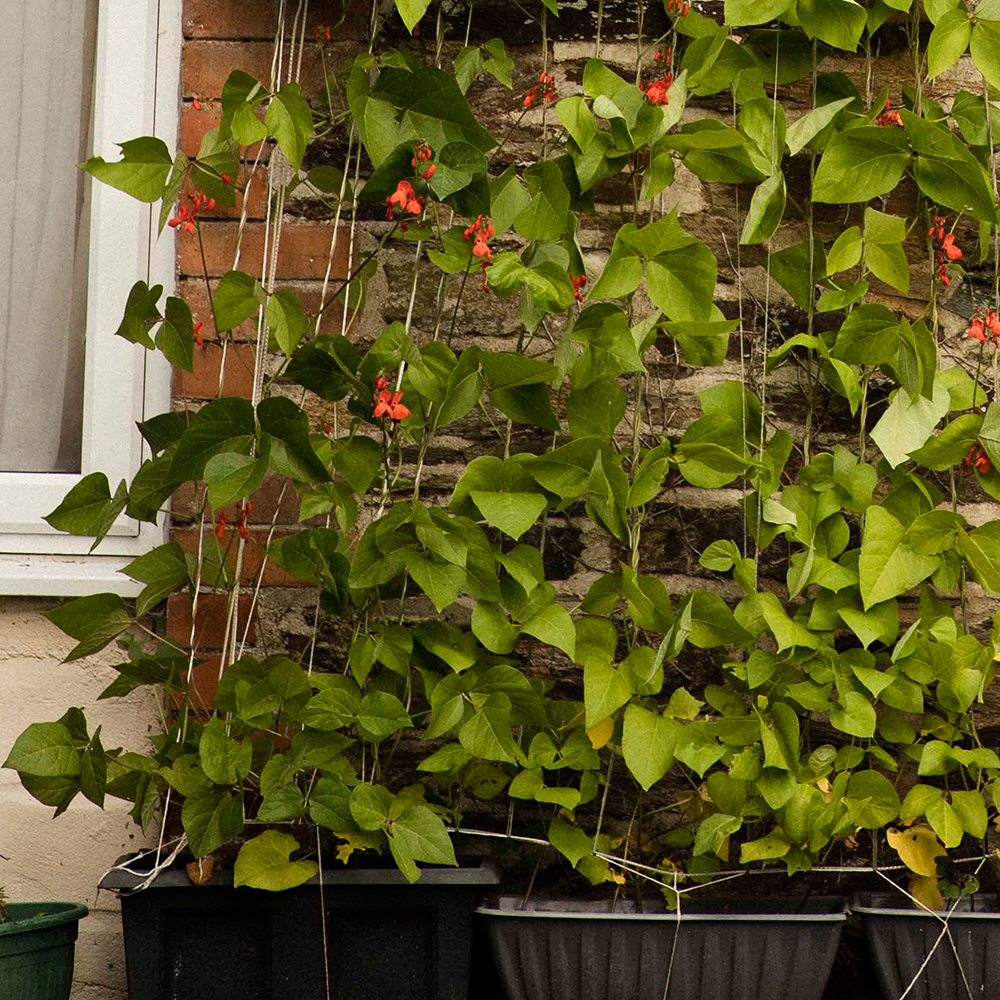
Or... grow climbing beans in pots against a wall to save space
If you’re desperate to grow climbing beans, but short on space, then this is a good way of doing so – plant them in deep windowboxes against a wall or trellis, ideally south-facing. You can probably plant 2 to a container, 3 at a push. They may not be as prolific in cropping, but they will certainly look nice and if you give them a fortnightly feed once they start flowering, they should stay fairly healthy through the summer.
Climbing Bean Varieties
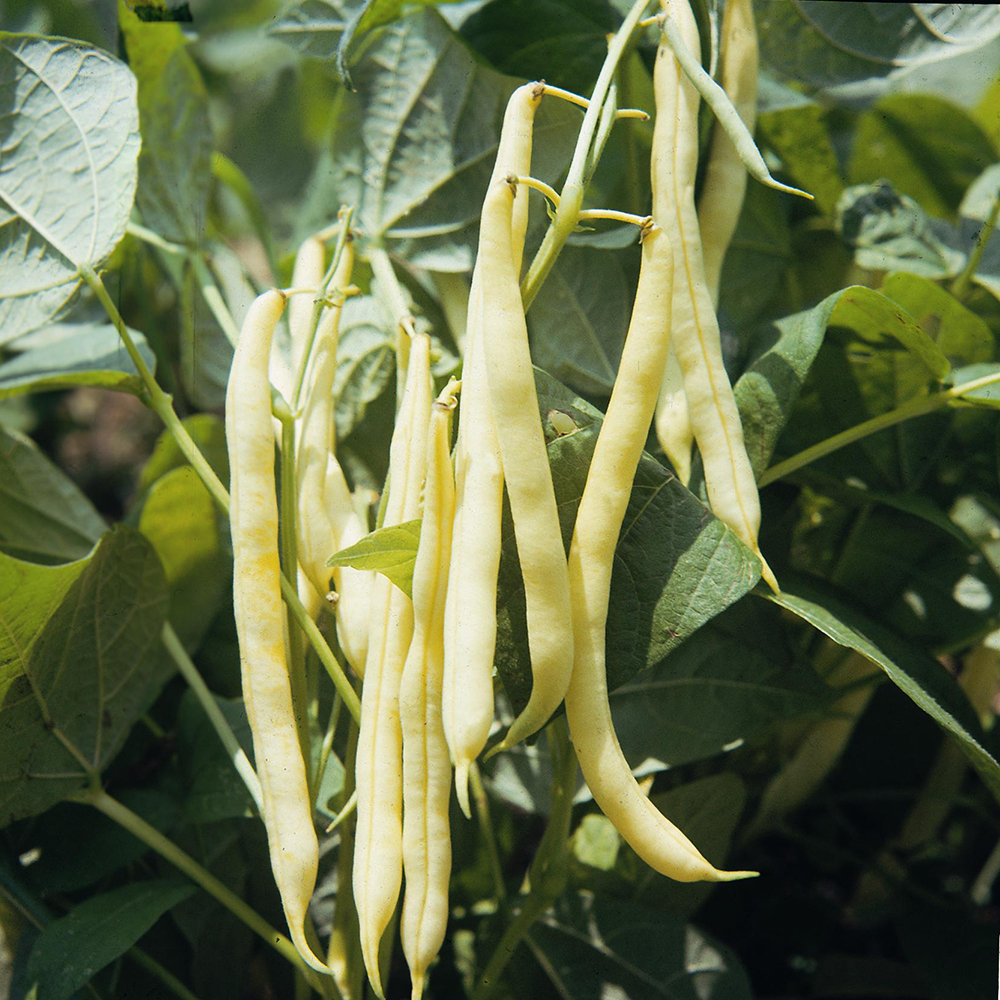
Dwarf beans can be planted closer together, so they're good for small spaces
Dwarf beans only need about 20cm between plants (rather than 30-40cm like climbing beans) which makes them a really good option for growing in smaller gardens. You could happily plant 3 or 4 in a grow bag, which can work really well if you don’t have raised beds. If you dohave raised beds, you only need an area of about 1m x 50cm to grow 10 plants.
Dwarf Bean Varieties
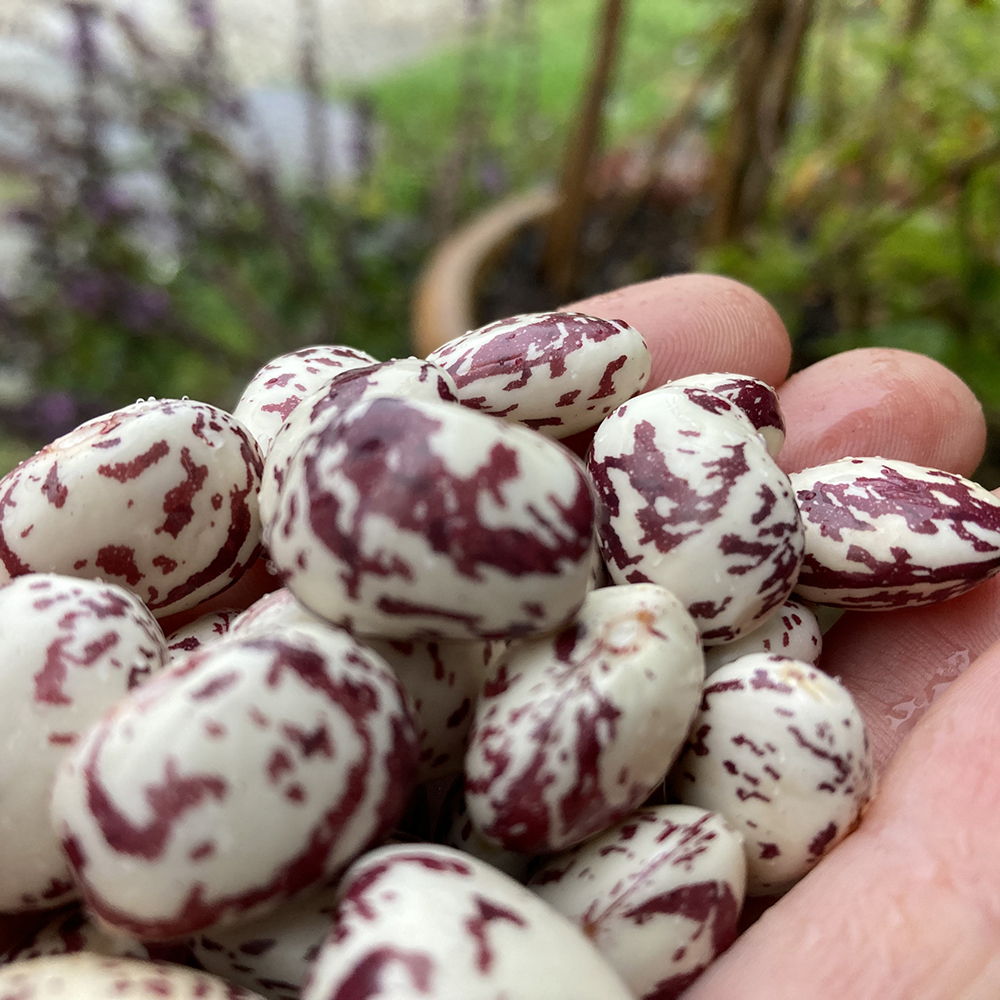
Bean varieties for podding & drying
Some bean varieties work really well for podding the beans at the very end of the season (usually October time), drying them out and then storing in jars to use in stews and casseroles over the winter months.
The best options for this are Borlotti Beans (which look so fabulous with their purple marbled patterns), Cannellini Beans and Haricot Beans (Blue Lake is a good variety) – they are all climbing varieties, and since you want to grow them to the very end of the season and dry them out, we’d recommend growing these in raised beds, spaced 30-40cm apart), rather than in windowboxes so that they have plenty of air circulating around them as the weather turns wetter.
Beans for podding & drying
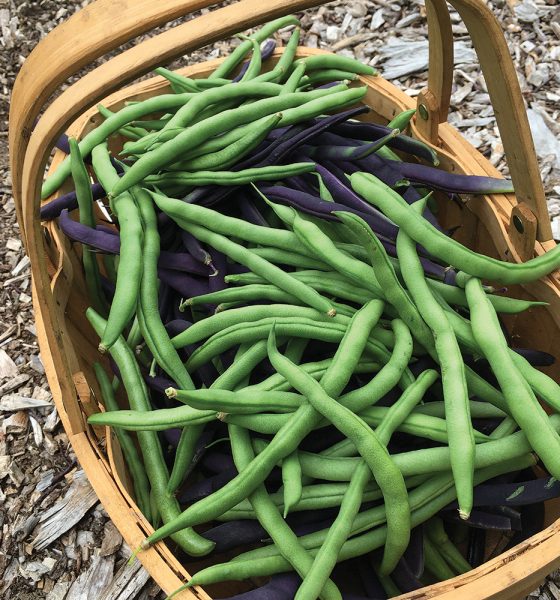
Share plants with friends to grow more varieties!
This may seem a little obvious, but don’t forget to ask friends/neighbours if they’d like to hare a plant delivery with you – we sell our bean plants in sets of 10, but if you just wanted a few plants of each colour or variety, then sharing out with friends is a good option.
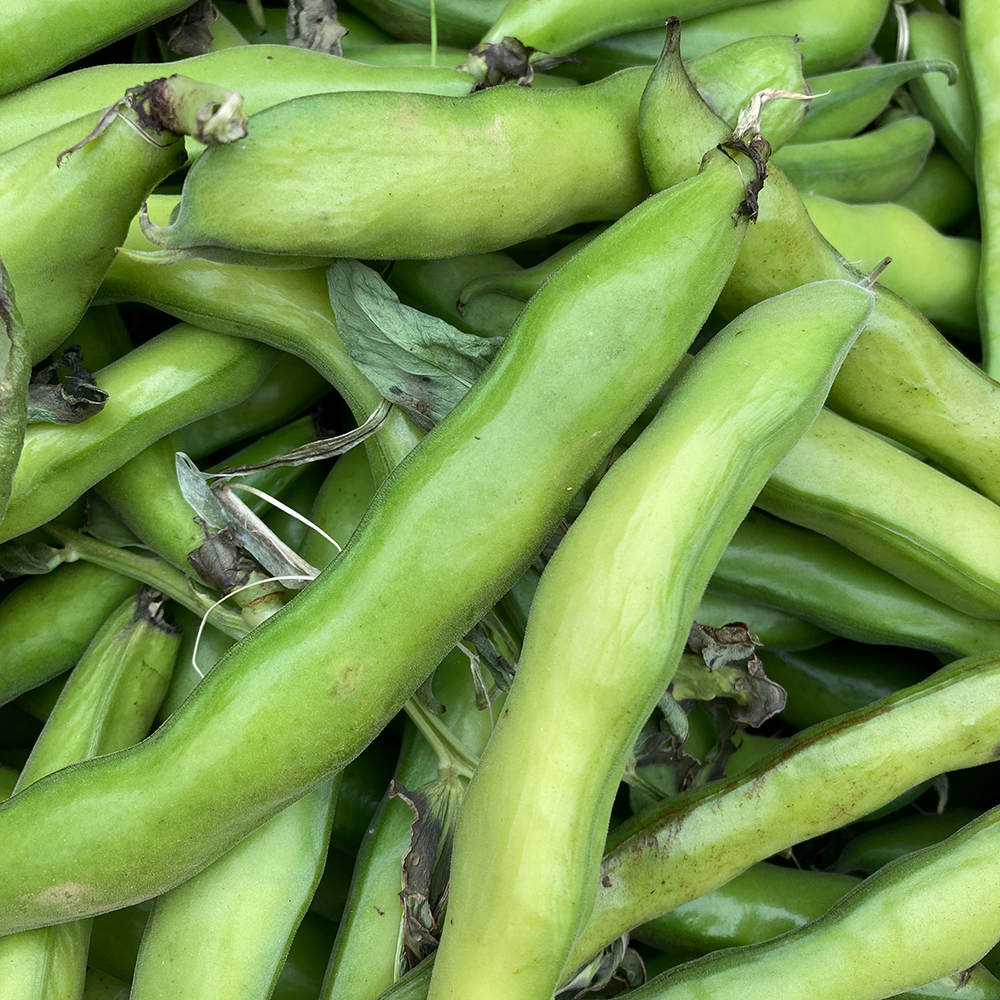
Other beans to consider - broad beans & edamame
Don’t forget broad beans – they are good for beds where you can support them easily by propping a couple of bamboos at either end of the row and running garden twine around them.
If you would like to grow broad beans, we recommend getting your order in nice and early so that you can plant out relatively early too to get the best crop.
Edamame beans can be grown in much the same way as broad beans, and don’t take up a huge amount of space either, so they are very good for small plots.

